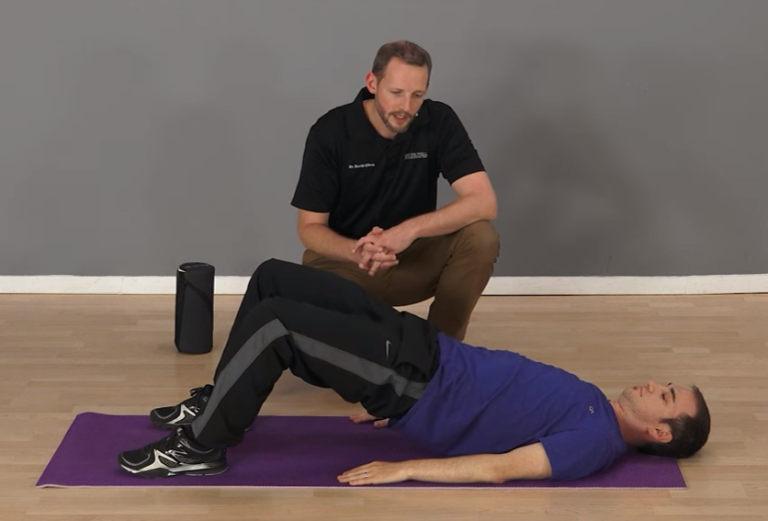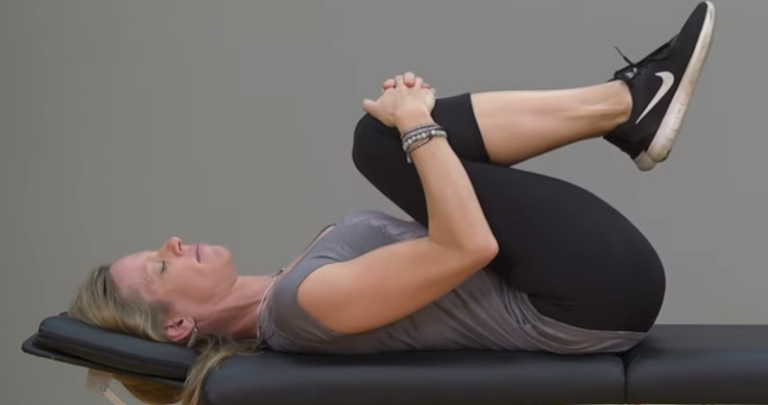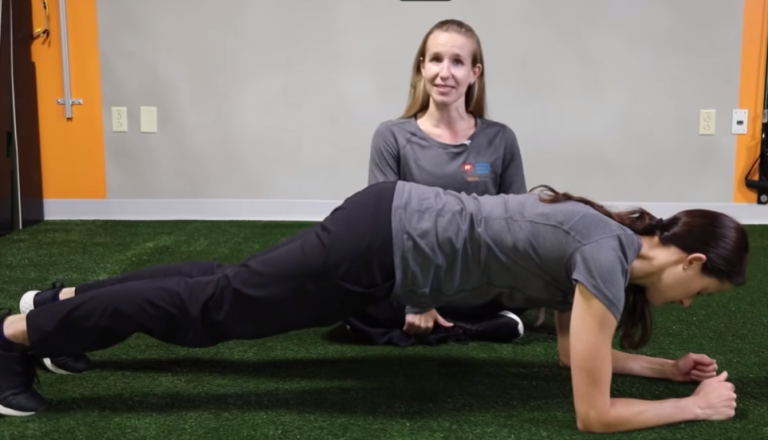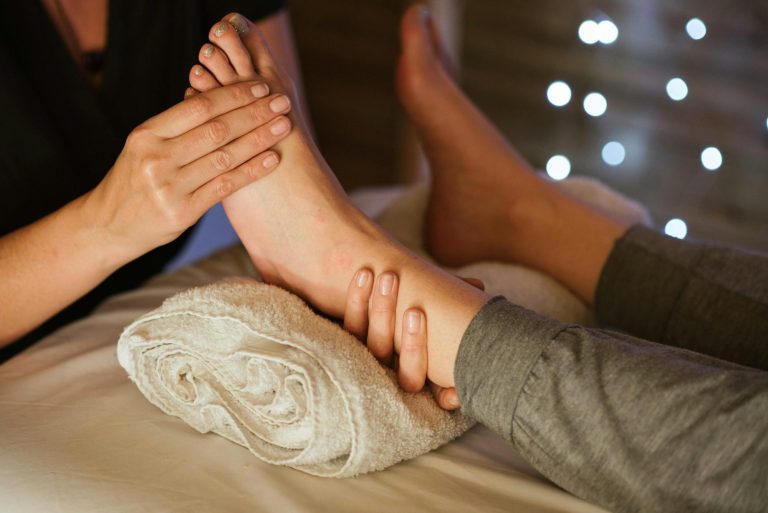Manage Hypermobility Back Pain
My first hypermobility symptoms were pain in my back when sitting. I have a dedicated page for desk/office/work set-up and sitting whilst travelling or in other chairs. This page is dedicated to general advice on how I manage my back symptoms caused by hypermobility. I would advise you see a professional physio to gain advice on the right exercises for your condition. Please read my disclaimer before attempting any exercises.
Supine Lower Trunk Rotation
My favourite exercise to release tension in my back is the Supine Lower Trunk Rotation. Lie on the floor with your knees bent, and rotate your knees slowly from side to side whilst keeping your head and shoulders in contact with the floor. I do a set of 10 on each side 2-3 times a day. My back feels looser after I've done it. There's a great video in the link below to show you how to do it. The video shows the woman rotating her knees to one side. You simply bring your knees back to centre and then rotate to the other side to complete a repetition.
Glute Bridge
Another exercise I do on a daily basis is the Glute Bridge. Similarly to the Lower Trunk Rotation, start on your back with your knees bent, then slowly raise your buttocks with shoulder and head in contact with the floor until your back is straight. This exercise helps to mobilise your spine if you slowly raise your back one vertebrae at a time. It's great for strengthening your glutes, which will help prevent back pain. The video below shows you how to do it in detail including how to avoid pitfalls which would mean you're doing it wrong.
Knee to Chest Stretch
This is an exercise that I do to relieve lower back tension and pain. I usually just pull both knees to my chest at the same time rather than one knee at a time, but experiment to see what helps you the most. The video at the link below shows you how to do the exercise correctly.
Plank
One of the best exercises you can add to your daily routine is a plank. This exercise builds your core strength to help reduce your neck and back issues. Lie face down on a yoga mat or comfortable surface, then raise your body up on your forearms and toes as pictured. You want to get your body in a straight line, and tense your abs. Hold this position for as long as you can. If it's only 10 seconds initially, that's ok! I always start new exercises cautiously and build the number of reps and length of time slowly. Next time you do it, try to hold for a few more seconds until you can comfortably hold the position for 1 minute. Doing a plank to start and end your day will build strength in your core muscles over time. To progress from there, you can find lots of ways to make this exercise more challenging on YouTube. The link below shows you how to do the basic plank position and some common mistakes to avoid.
Back Pain Relief Stretcher
As a hypermobility sufferer, the common cause of back pain is poor posture. We don't have the natural limits in our joints, or the cues to our brains to prevent poor posture. For me, this is most prevalent when sitting for long periods in my office job. The Pro11 Wellbeing 3rd Generation design Posture Plus corrector and back pain relief stretcher is a great product which helps to stetch your back, relieve tension from poor posture and help to correct issues from sitting for long periods of time. Using this for up to 5 minutes once a day definitely makes my back feel looser, and helps to prevent that build up of back pain from long periods of sitting.
Deep Tissue Massage
I'm a firm believer in the benefits of deep tissue massage for managing back pain. Massage won't solve the underlying cause of your back pain, but it can help your muscles recover from the stresses and strains of every day life. If you fix your posture, exercise and have a deep tissue massage regularly you will improve your back pain. It's not easy to find a good masseuse, so it can take some trial and error. You'll know when you've found one! I'd lean towards professional massage shops and spas, and Treatwell is a good place to start your search.
Office & Desk Setup
As mentioned, my personal back pain mainly stems from long periods of sitting while I work. It's imperative that you set up your desk using the correct ergonomic principles. I have a page which describes how you do this, and recommends the products that I use to limit the impact of working at a desk on my body.
©Copyright 2024 Hypermobility Helper. All rights reserved.
We need your consent to load the translations
We use a third-party service to translate the website content that may collect data about your activity. Please review the details in the privacy policy and accept the service to view the translations.







